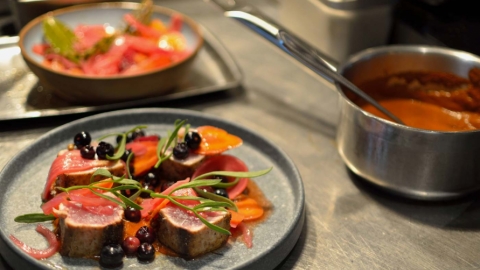The Shipwright’s Daughter: Chef David Standridge is Actually Building Bridges
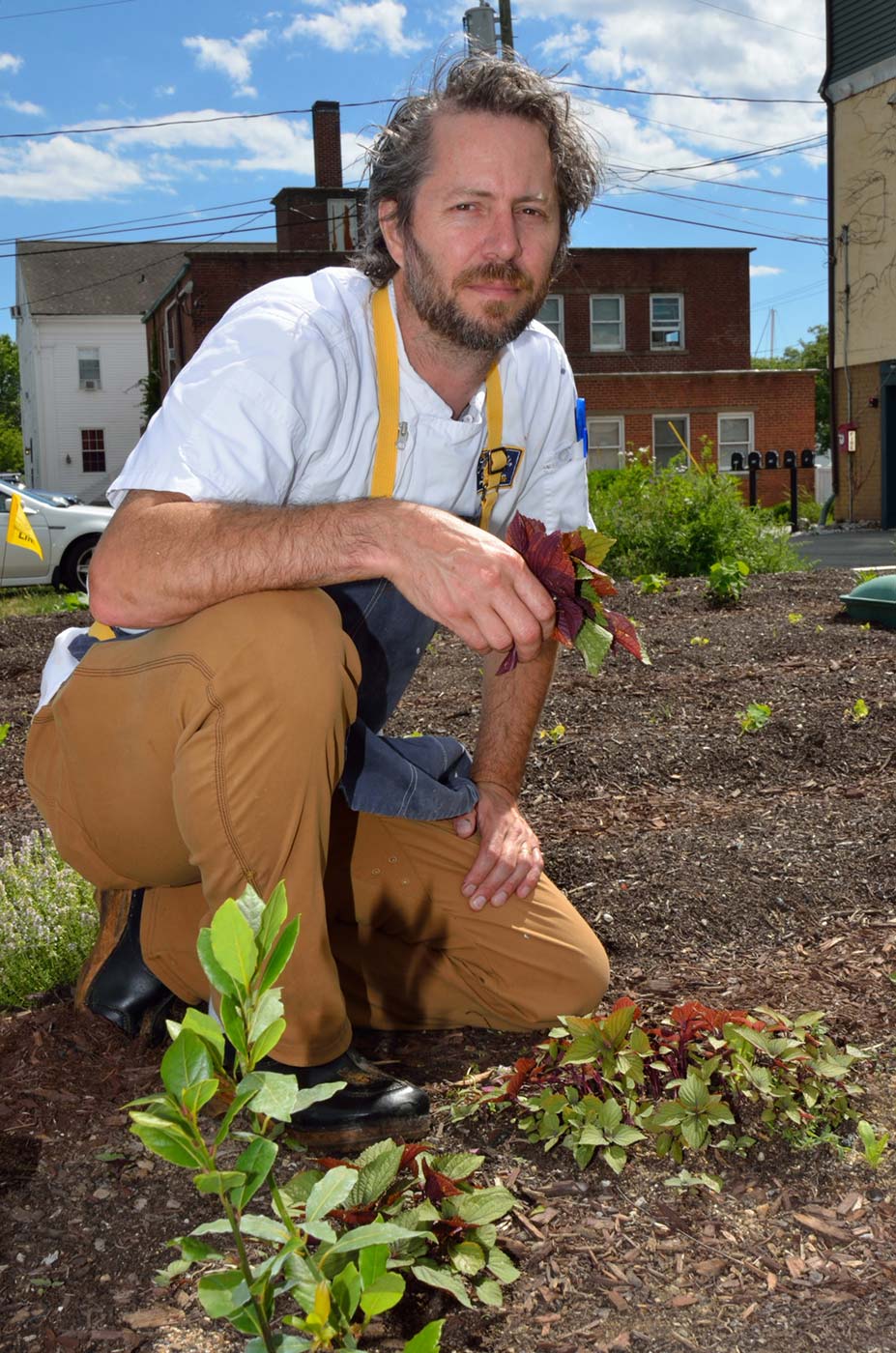
Watching Chef David Standridge cook is a lesson in love. Really. Without words even, the respect he exudes for food, for his team, for the restaurant, and for the whole process of getting a beautiful plate to you, is remarkable. It’s a quiet sensibility, and yet it speaks volumes to those of us who admire from afar. Whether he’s butchering a fish, cooking for “family meal,” or tending to the restaurant garden, each move is an arabesque to applaud. And now we can; Shipwright’s Daughter, within the beautifully renovated Whaler’s Inn of Mystic, is celebrating its one-year anniversary.
There’s a particular finesse when Chef Standridge is breaking down a fish. Not that every cut is pristine (he is human after all), but as he is cutting, he is planning, creating, and deeply connected to each layer. It feels a bit sacred, frankly, especially knowing how much he considers the role everyone involved plays in making each meal a reality. From farmers and fishmongers (he says he loves this word), to the hotel, restaurant, and bar staff, each plays an integral part. Strolling through the restaurant, you see it and feel it. Of course, the space is beautifully designed with blues and crisp nautical nods, but beyond the surface there’s a real sense of balance, a collective hum,
David’s sense of balance is likely one of the most impressive aspects of his work. It is something that also transitions to the core of his cooking, quite literally. As much as possible, nothing goes to waste. So, while he’s butchering that fish he is considering the use of every part of the fish. On one visit, with meat saw in hand, he was elated to demonstrate his butchering of a 30lb Yellowfin Tuna and a couple of John Dories. Within thirty minutes he had the beautiful filets, of course, but also a large, organized pile of pieces, often cast away, destined for a number of inventive and delicious plates.
When talking to David about evolving palates, and diners being more open to the uncommon parts, the “ugly bits,” or offal even, he agrees people are becoming more and more interested and open to trying all parts of a product, not just the prettiest filets. As a matter of fact, one of his recent signatures, and now a fan favorite, has become the Tuna Bolognese, using the bloodline of the fish. As he was butchering this tuna, for example, he held it up. It was certainly long, dark, and rich. You could imagine our ancestors gawking at the waste if thrown out. “Actually,” he says, “some of our weirdest dishes sell out the fastest. We did a tongue-in-cheek dish with several iterations called The Good Parts.” He continued, “we would do chicken with heart and liver yakitori style [a Japanese grilling technique], and we made The Good Parts fluke with liver, fin meat and cheek. But you have to stand behind it and if you do people will buy in. Of course, it does have to taste great as well!”
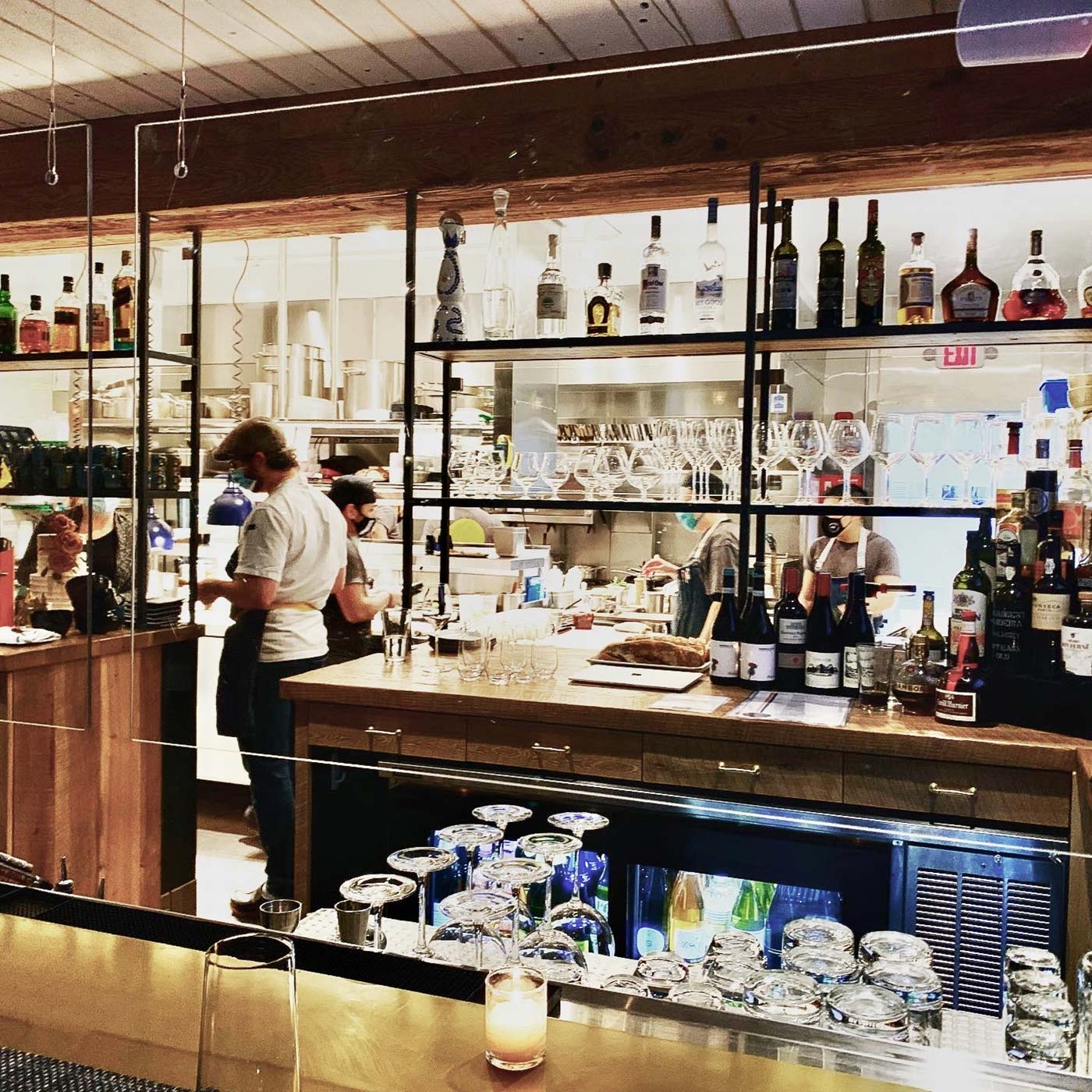
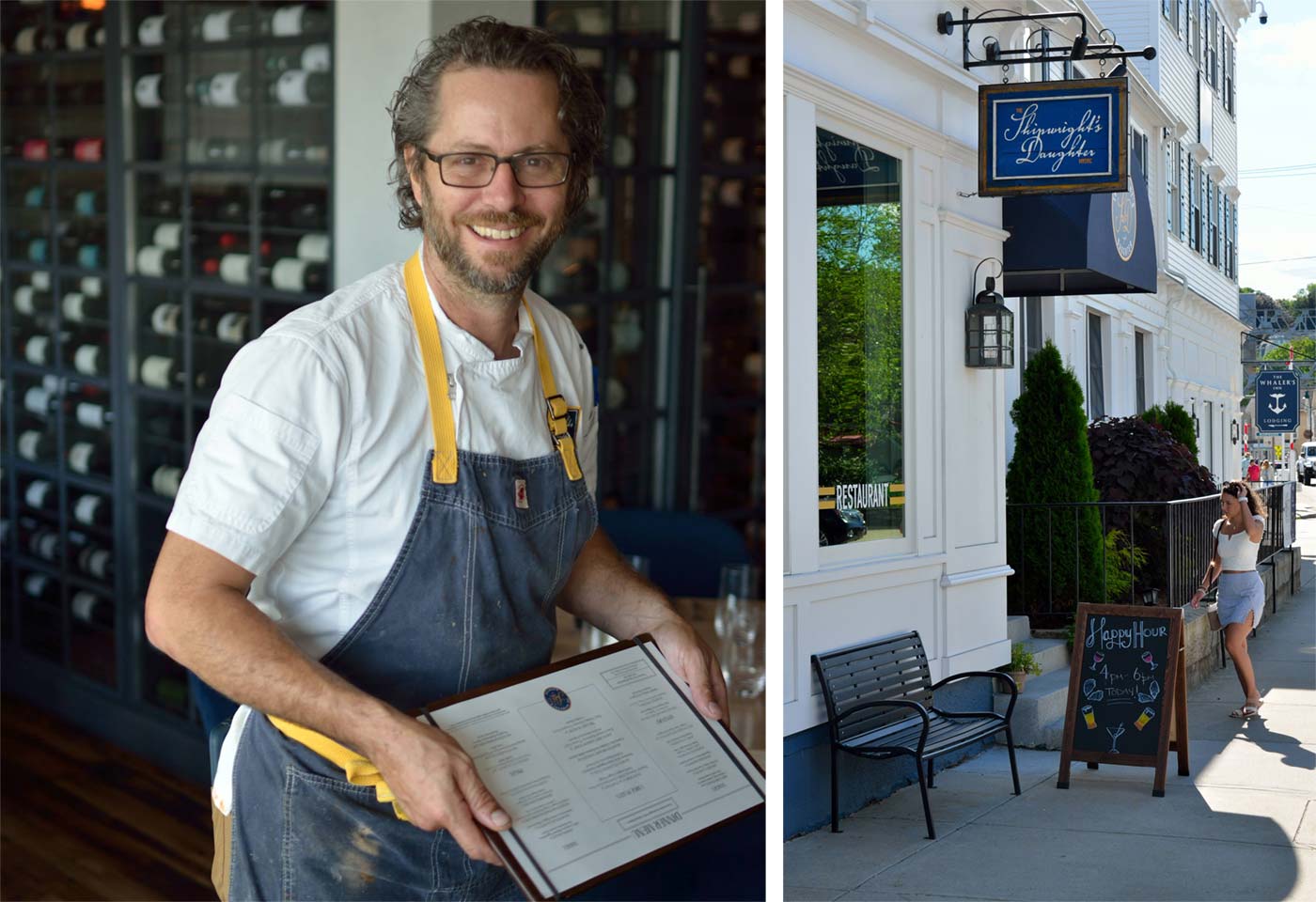
In terms of deciding what to use, he continued, “There really is not much in a fish, or most animals, that can cause harm. It's about making it delicious. There are some things like intestines that need to be cleaned very well, but that’s just good technique….if you can make it taste good, the hard part is not getting people to try it.” Ay, there’s the rub: inventing a low-to-no waste, creative meal that tastes delicious, looks appetizing, and is consistently well-executed.
Another thrill of fish butchering and creative cooking came early this summer when Chef Standridge, his sous chef Michael McHugh, and the team procured a one-hundred pound halibut. When asked about how much they were able to utilize from it, the results are astounding. “How long it lasts really depends,” he said. “We blew through the filets in about three days. We have been dry aging some cuts. The rack (loin on bone) aged a week and we sold it all in one day, unexpectedly.” “So, what’s on the menu tomorrow?” He laughs, “I have a really nice bone-in “Porterhouse” from the bottom loin that will finish aging and go on our butcher block for a steak-like preparation. The little bits find their way into smaller plates. We cure the cheeks for halibut guanciale, which we will do either as a toast or over pasta; the belly’s got a light cure with lemon thyme and will run as a crudo with orange citronette and nasturtium oil. The poached filets were served with a turmeric potato broth made with the halibut bones. All the dry aged cuts are served with the skin and scales on. It turns into like a fish crackling after aging. And the offal, the weird bits? “The offal was not really usable on this one. It varies, depending on how it was handled on the boat.”
David says he has seen more and more chefs being creative in this way with meat, but not as much with fish. So, it’s relatively new territory for some American restaurants, and yet fish reigns in Mystic, so need we say more? Years ago, he discovered Australian Chef Josh Niland, when he wasn’t as famous as he is now. “Josh is doing amazing fish things,” Chef says. “He has had years to perfect his supply lines and techniques for specific fish, so we aren’t really at that level yet, but we work with what we have here in the Northeast. The hardest part is establishing relationships with the best fishermen and getting the best catch. This is key in any industry and in food, where health and the very livelihood of your business can be on the line, it’s paramount. Shipwright’s is just a year in, so who knows what connections will be formed in another year, but creating that circle of trust for all involved, is an under-recognized tenant of leading a kitchen.
“I’ve been working overtime on those relationships of late,” Chef continues. “Trying to get fishermen to buy into a cooperative approach where I am willing to buy whatever they catch, as long as it is top quality, is the goal. Then we have the task of figuring it out and getting it on the menu. It's an exciting way to do business but extremely challenging.”
Chef Standridge moved his growing family to Mystic two years ago after years in New York working under culinary master Joel Robouchon, earning two Michelin stars; leading a team at farm-to-table spot Market Table in the West Village; and at Cafe Clover and Clover Grocery in East Hampton
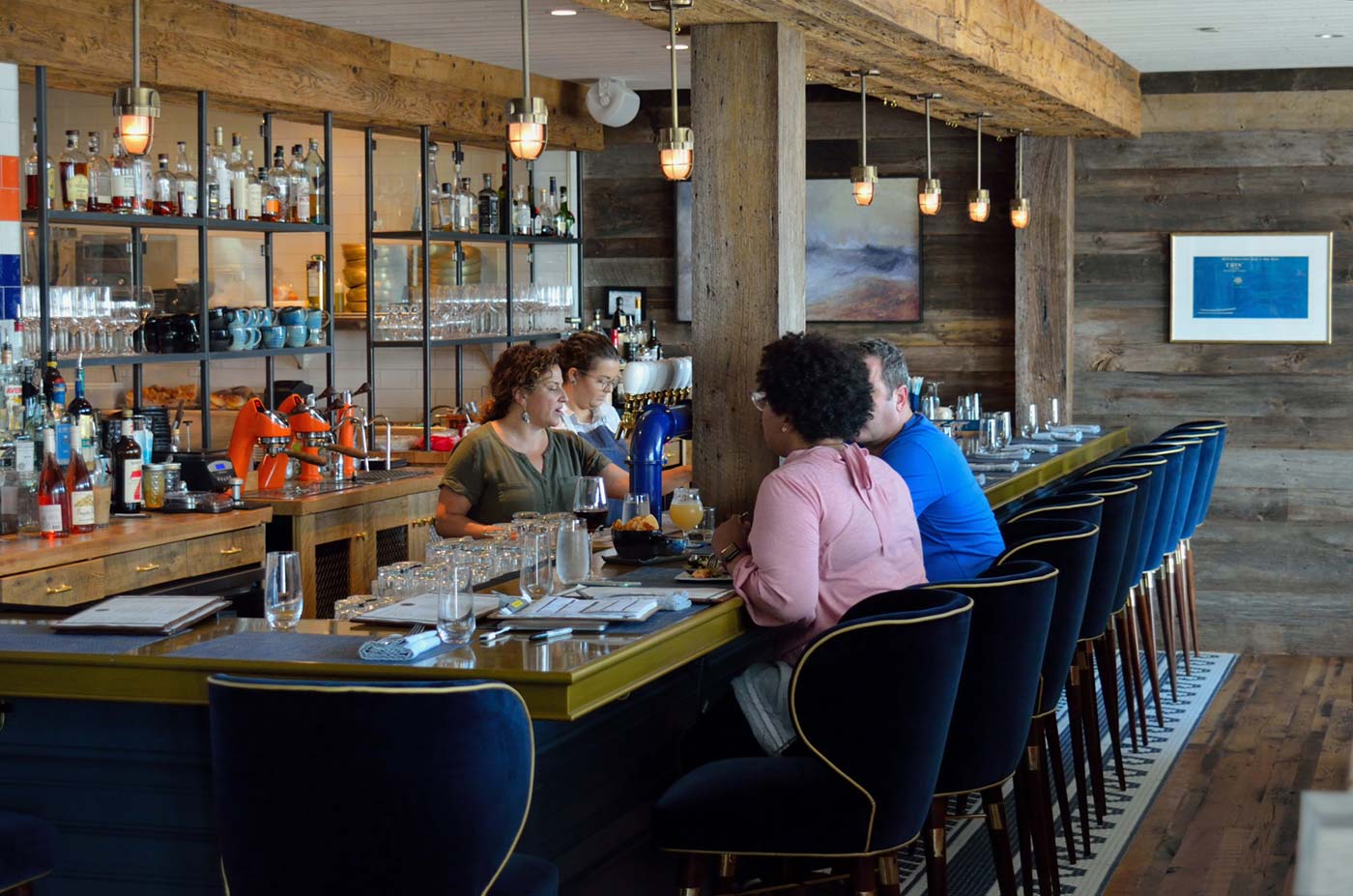
Chef Standridge moved his growing family to Mystic two years ago after years in New York working under culinary master Joel Robouchon, earning two Michelin stars; leading a team at farm-to-table spot Market Table in the West Village; and at Cafe Clover and Clover Grocery in East Hampton
“Like everything we do, it’s a work in progress.” Chef says. “I think the key to success is being immune to feeling satisfied about anything. We have a lot more work to do." He went on to discuss the many connections he’s been making for produce and beef, for lamb and pigs, for ducks. “We are building those relationships though and are excited to be working directly with farmers this season….it works the same as the fish, however: How much do they have? Will it be enough for the weekend? What do we use when it runs out? It’s the calculus of menu creation and the calculus of vegetable production which adds up to well, a lot of calculus!”
One of David’s partners is Suzie Flores of Stonington Kelp Co. “She mentioned to me the other day that she likes that everything we are doing is about collaborating and supporting. I hadn’t really thought about that as a thing, but that is what I want this to be. I’m hoping to find collaboration with our fishermen as well.” Chef says he was familiar, of course, with seaweed in dishes, but using fresh kelp was new to him. Not only did he quickly learn to use it and enjoy it, but April saw him and many other regional chefs participating in the first ever New England Kelp Harvest Week when kelp was used in everything from main course and desserts to beers and cocktails.
“It’s the beautiful thing about living where the food comes from,” Chef notes. “Sure, you can get [these products and supplies] in NYC, but you don’t get the same friendships, or comingling of ideas; or [the same] aspirations that only happen around a fire in someone’s backyard, that all only exists at the source.”
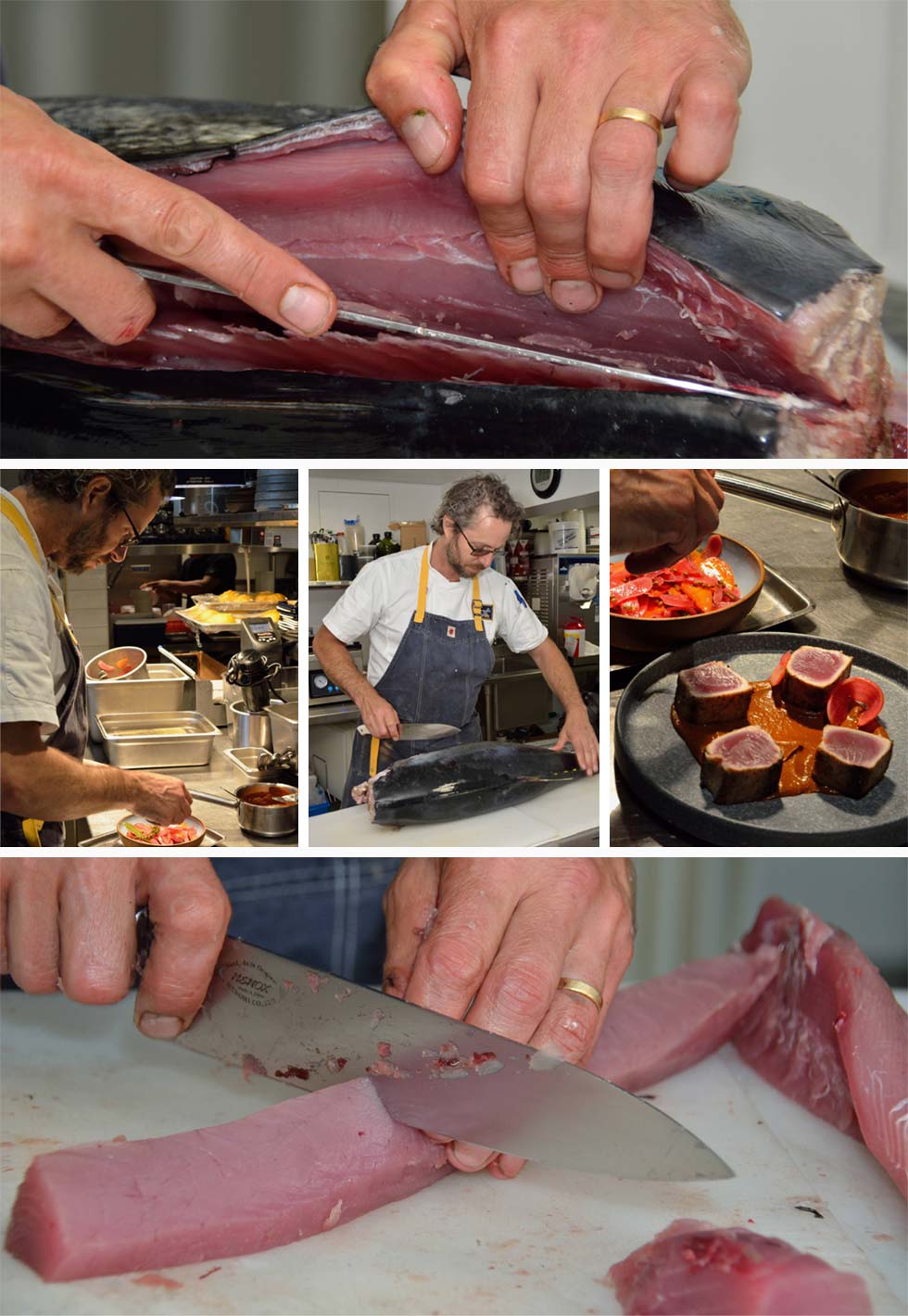
“It’s the beautiful thing about living where the food comes from,” Chef notes. “Sure, you can get [these products and supplies] in NYC, but you don’t get the same friendships, or comingling of ideas; or [the same] aspirations that only happen around a fire in someone’s backyard, that all only exists at the source.”
The Shipwright’s Daughter and Chef Standridge have a lot to celebrate this first year. Surely, the team would agree it has felt much longer! Between the difficult wedge that was the pandemic, and the domino effect it has had on them and the industry; however, this summer, everyone gets to hit the reset button. The team is re-energized, and diners are HUNGRY. Even on a weekday evening recently, the bar was full at six pm and the restaurant was filling up fast. In a short span of time, Shipwright’s has become a cherished spot amongst a growing list of enthusiastic regulars. With Chef Standridge at the helm, and in the kitchen, if all of this has happened in a year, what will the next year bring? We can’t wait to find out!
The Shipwright’s Daughter is located at 20 E Main St, Mystic, CT, in The Whaler’s Inn.
Follow David on Instagram @chefdavidstandrige and the restaurant @ShipwrightsDaughter






